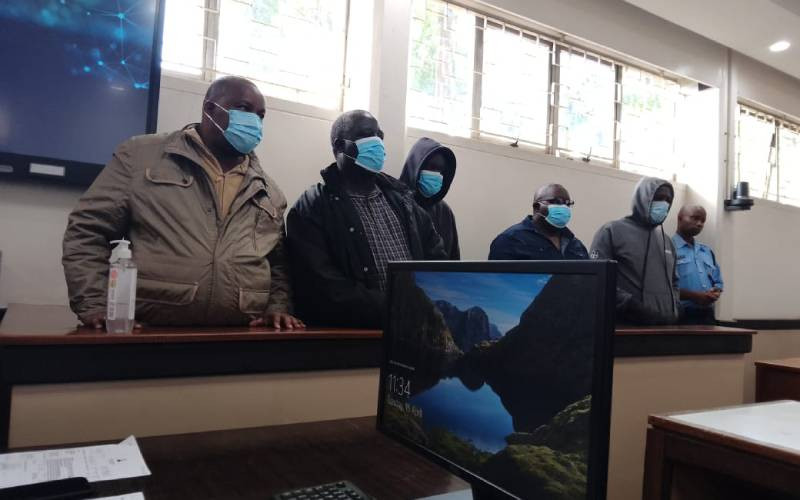By Peter Kagwanja
Three years on, Kenya’s power-sharing Grand Coalition continues to swing like a rollercoaster from accord to discord. The National Accord and Reconciliation Act (28 February 2008) ended 60 days of impasse and bloodletting that followed the declaration of President Mwai Kibaki as victor in the 2007 presidential contest and the ensuing rejection of a court remedy to the dispute by the challenger, Raila Odinga, opening the floodgates of citizens’ protests.
The Kenya-style experiment with power sharing inspired other similar models in Zimbabwe but it has failed to foster enduring stability at home and abroad.
The promulgation of the new Constitution on August 27, 2010, has halted what political analyst, Larry Diamond, described as a "democracy in retreat" and spurred economic growth to a high of 7 per cent, bringing closer to reality Kenya’s vision 2030.
Pundits are wary that intra-coalition power tussles threaten the new Constitution and impede reconciliation. In a recent article, the Secretary-General of President Kibaki’s Party of National Unity, Kiraitu Murungi, highlighted the unfinished business of reconciliation and the politics of the 2012 elections as the foremost threats to the new Constitution and national reconciliation.
Two recent developments have pushed the Coalition to a tipping point: the naming by the International Criminal Court (ICC) on December 15, 2010, of six Kenyans who could to face trial in The Hague for crimes relating to the 2008 violence; and the impasse over the nominations of the Chief Justice, the Attorney General, the Chief Public Prosecutor and the Controller of Budget which President Kibaki submitted to the National Assembly.
However, long before the present impasse, the visible poverty of philosophy that underpinned the National Accord and Reconciliation Act (2008) had laid the seedbed for the failure of Kenya’s frightful foray into power sharing. Indeed, underlying the on-going paralysis of power is the invention by the architects of the accord of the flawed idea of "two principals" in a split Executive, completely oblivious of even the most basic African wisdom: ‘two bulls cannot share a shed."
Kenya’s new Constitution created only one centre of power in a democratic anchored upon the principle of separation of powers. But on the road to 2012, Kenya is bedevilled with three — not two — centres of power styled on the dysfunctional ‘triumvirate’ system that once pushed the Roman Empire to the ropes. In a nutshell, Kenya’s Coalition has all the trappings of the Roman-style triumvirate, which refers to a formal or informal regime where three powerful leaders are equal on paper, but in reality they are locked in tussles for dominance.
At the top of Kenya’s ‘triumvirate’ is President Kibaki, recognised by both the old and the new constitutions as the country’s chief executive as the head of state, government and arms-wielding formations. Kibaki spearheaded the campaign for the new constitution based on ‘one centre of power’ and presided over one of Africa’s fastest growing economies, but a raft of propaganda has depicted his coalition wing as anti-reform.
Divided opinion within the coalition over the deferral of ICC cases and the nomination saga continue to fuel anti-reform claims. The entire justice orthodoxy—Minister for Justice and Attorney General’s office—has challenged the President’s policies in a public and palpable way. This does not only point to Kenya’s dysfunctional ‘triumvirate,’ but also confirms coalition politics as what Winston Churchill ones parodied as "the prerogative of the harlot" where an individual can at once be a cabinet minister and an activist.
The second front of Kenya’s triumvirate system is the Prime Minister’s office created by the 2008 Accord. Admittedly, ODM has been more adept and savvier in power manoeuvres than its competition.
In the same vein, ahead of next year’s elections they have mooted an ‘incumbency strategy’ buttressed by favourable opinion polls to capture the presidency in a one-centre of power after 2012. Hinged on the view that ‘incumbents in Africa seldom lose elections,’ this strategy seeks to project the Premier as the ‘incumbent,’ eclipsing a ‘lame-duck’ President. This strategy has, to some extent, stoked the spiralling political temperatures.
The third leg of Kenya’s triumvirate is signified by Kofi Annan, the former UN Secretary General whose power in Kenya derives from his role as the Chairman of the African Union Panel of Eminent African Personalities, which brokered the accord.
In three years, Annan’s mediation has metamorphosed from symbolic moral power to one of history’s most powerful and subtle architecture of power and peace with its most visible planks as western donors and governments and a donor-funded outfit—the Kenya National Dialogue and Reconciliation (KNDR) Monitoring Project.
—The writer is president of the Africa Policy Institute and PNU’s political strategist
Stay informed. Subscribe to our newsletter
 The Standard Group Plc is a
multi-media organization with investments in media platforms spanning newspaper
print operations, television, radio broadcasting, digital and online services. The
Standard Group is recognized as a leading multi-media house in Kenya with a key
influence in matters of national and international interest.
The Standard Group Plc is a
multi-media organization with investments in media platforms spanning newspaper
print operations, television, radio broadcasting, digital and online services. The
Standard Group is recognized as a leading multi-media house in Kenya with a key
influence in matters of national and international interest.
 The Standard Group Plc is a
multi-media organization with investments in media platforms spanning newspaper
print operations, television, radio broadcasting, digital and online services. The
Standard Group is recognized as a leading multi-media house in Kenya with a key
influence in matters of national and international interest.
The Standard Group Plc is a
multi-media organization with investments in media platforms spanning newspaper
print operations, television, radio broadcasting, digital and online services. The
Standard Group is recognized as a leading multi-media house in Kenya with a key
influence in matters of national and international interest.









